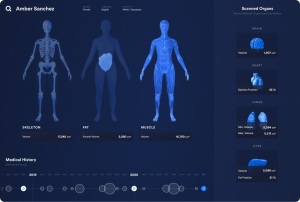por
John R. Fischer, Senior Reporter | May 28, 2021

Technical limitations must be overcome in order to fully utilize digital twin technology in healthcare
With a digital twin, clinicians have a virtual representation of an object or person right at their fingertips that can tell them anything from how well a healthcare solution will perform to how well a patient will respond to different therapies. Many expect the technology to play a big role in predictive, precise and personalized medicine.
But before this “powerful tool” can be used to its full potential, said British and American researchers, a number of investments are needed to overcome significant technical challenges, including the underlying theory behind model development, speeding up and combining models to ensure proper functioning, and developing mathematics to determine uncertainties in patient data and model predictions.
"There are a spectrum of digital twins that can be used for patients, from complex multi-scale models that map cellular physiology to whole organ pump function, to simpler models that represent a patient by a handful of variables. We can expect to see the simpler models be used in pilot studies in the near future, while it will take more time,” lead author professor Steven Niederer of biomedical engineering from the School of Biomedical Engineering and Imaging Sciences at King's College London, told HCB News.
Digital twins are virtual simulations of devices or people that use connected sensors and IoT protocols to collect real-time data about physical devices, systems and personal interactions to inform clinicians and help them predict the best course of care in their decision-making.
One challenge according to Niederer is predicting how the heart will operate under extreme conditions, with current research only showing how it’s prone to fail under normal operating procedures. The authors say this and other current use cases demonstrate new demands for speed, robustness, validation, verification and uncertainty quantification in digital twin creation workflows.
A recent Forbes editorial specified that one of the main problems preventing hospitals from fully leveraging digital twin technology
was the lack of full integration and interoperability — qualities needed to create a completely smart hospital or real-time health system. “Data is often incredibly siloed with repositories that lack integration; the addition of IoT or wearable device data amplifies that problem. There are still many vendor-specific technologies that are challenging to integrate,” said Sindhu Kutty, a partner and co-founder at Kuroshio Consulting Inc., a management consultant firm, in her Forbes opinion piece.
